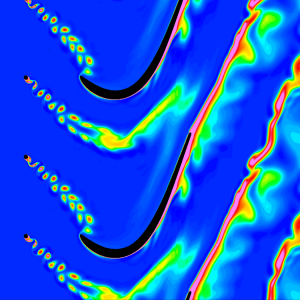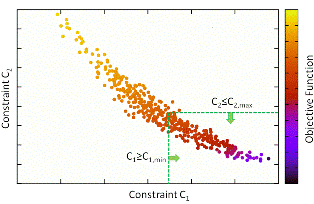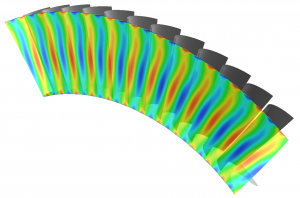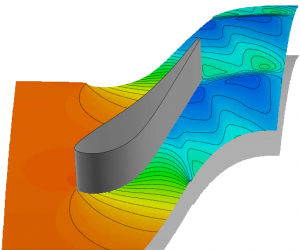Research
Background
In 1985 the University of Florence started a research project on advanced aerodynamic design. The aim was to improve design by taking advantage of the most recent research tools as soon as they become available. A large part of this project was focused on Computational Fluid Dynamics (CFD) and carried out in conjunction with NASA Langley and Lewis Research Centers.
The research activity led to the development of CFD codes (TRAF) specifically tuned to assist turbomachinery designers in advanced aerodynamic applications. These codes are used worldwide by leading companies and research centers (i.e. NASA Glenn, von Karman Institute, GE Avio Aero, Baker Hughes, Ansaldo Energia, Avio, Termomeccanica Pompe).
TRAF Code
TRAF is a viscous code for aerodynamic design and flow physics investigation. TRAF covers a wide range of possible applications from incompressible to typically transonic flows, from 2D to 3D-multi-block, and from steady to time accurate. The numerical method bases its efficiency on a Jameson-type multigrid approach. A four-stage Runge-Kutta scheme is used in conjunction with eigenvalues scaling for the artificial dissipation, variable coefficients, implicit residual smoothing, and multigrid. Time accuracy in unsteady calculations is achieved by a reformulation of the governing equation, which is based on a fully-implicit time discretization. Incompressible flows are handled by means of the artificial compressibility concept of Chorin. Grid generation spans from algebraic to elliptic type.
LARS Code
LARS is a time-linearized code derived from TRAF in 2000 to address aeroelastic analysis. It has been developed since then, implementing the same numerical scheme adopted for TRAF. Starting from 2004, LARS has been modified to also investigate aeroacoustic phenomena. LARS solves flow governing equations that have been linearized around a steady solution computed by TRAF. Grid deformation is taken into account in order to accurately represent blade aeroelastic vibrations. For aeroacoustic applications, incoming waves from upstream or downstream may be imposed at inlet or outlet boundaries. Three-dimensional non-reflecting boundary conditions, based on radial mode decomposition in sheared swirling flows, are implemented in order to avoid spurious reflections and accurately represent incoming waves. The code may be applied to a number of possible aeroelastic and aeroacoustic investigations: from 2D to 3D-multi-block, from flutter stability assessment to noise propagation analysis.
Research Activity
With more than 25 years of research experience, the TRAF Group is still focused on developing computer applications to support aerodynamic engineers in the design innovation with special emphasis to:
 | CFD (Computational Fluid Dynamics)Computational Fluid Dynamics has become a very popular computer based tool to solve and analyze problems that involve fluid flows. TRAF Group research activity in CFD is focused on algorithm as well as turbulence and transition model improvement with special emphasis on turbomachinery applications. The Group carries on research projects that cover most of the turbomachinery area such as gas turbines and compressors for aero-propulsion and energy production and it is also involved in many other applications from cryogenic pumps for space propulsion to highly loaded turbo-expanders. |
 | Aerodesign OptimizationWith the availability of low-cost computational power and the assessment of reliable numerical flow-solvers, modern aerodynamic design relies nowadays on CFD to investigate three-dimensional aspects of the flow. Traditional design tools, such as through-flow methods, as well as more sophisticated tools, such as 3D RANS computations, are coupled with modern optimization techniques exploiting meta-models and evolutionary methods. Since many years, T-Group is facing the aerodynamic redesigning of aeronautical and industrial turbomachines in cooperation with industries. |
| CAA (Computational Aeroacoustics)Computational AeroAcoustics has recently become a very important numerical tool to study issues related to noise pollution. T-Group research efforts on CAA are focused on algorithm and physical modeling improvement with special attention to turbomachinery tone noise generation and propagation. The Group is involved in research projects aimed at reducing noise emissions produced by aircraft engines. |
| CA (Computational Aeroelasticity)Computational Aeroelasticity is a valuable numerical tool used to analyze problems related to flow-induced vibrations. T-Group research activity on CA is centered on algorithm and flow-structure interaction modeling improvement, especially oriented towards turbomachinery blade flutter. The Group is involved in research projects conceived to enhance the understanding of vibration phenomena in order to reduce the risk of blade failure in aircraft engines. |


